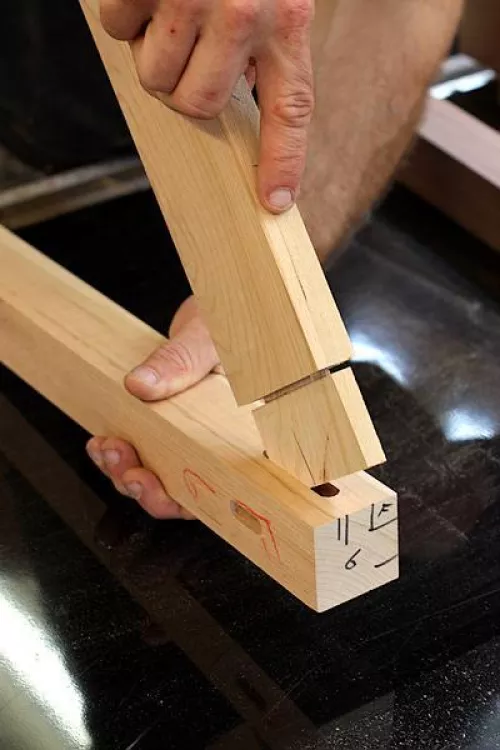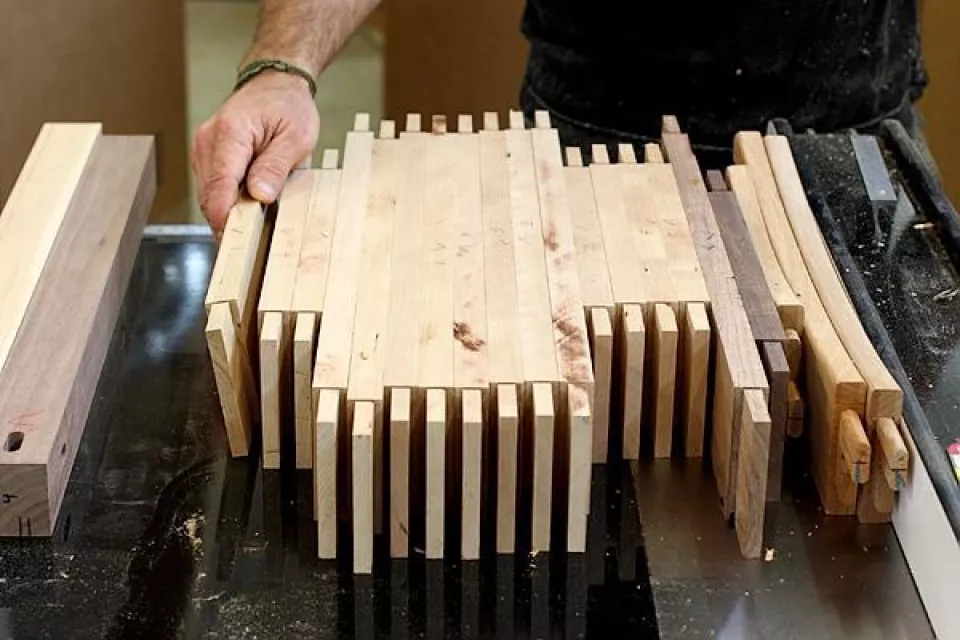We use a Delta Tenoning Jig to cut the cheeks on most of our tenons. This tool from the 1980’s is well-made, stable, safe, and easy to precisely adjust. I hope the new ones are made so well.
After cutting the tenon shoulders on the crosscut table saw, we set the jig to cut the cheeks–thus defining the thickness of the tenon and the fit into the mortise. Note that the jig indexes off of opposite faces of the rail, therefore if the thickness of the parts in a run are different, the thickness of the tenons vary, and not all tenons will sweetly fit. We do our final dimensioning on our wide belt sander, not the planer. We keep our wide belt sander finely tuned, so that, end to end, side to side, and part to part, the variation in thickness is less than .005.

Test fitting is crucial to find that sweet fit that requires just a little clamping pressure to assemble.

Once set, the jig allows us to cut the cheeks of the tenons quickly and consistently accurate.

